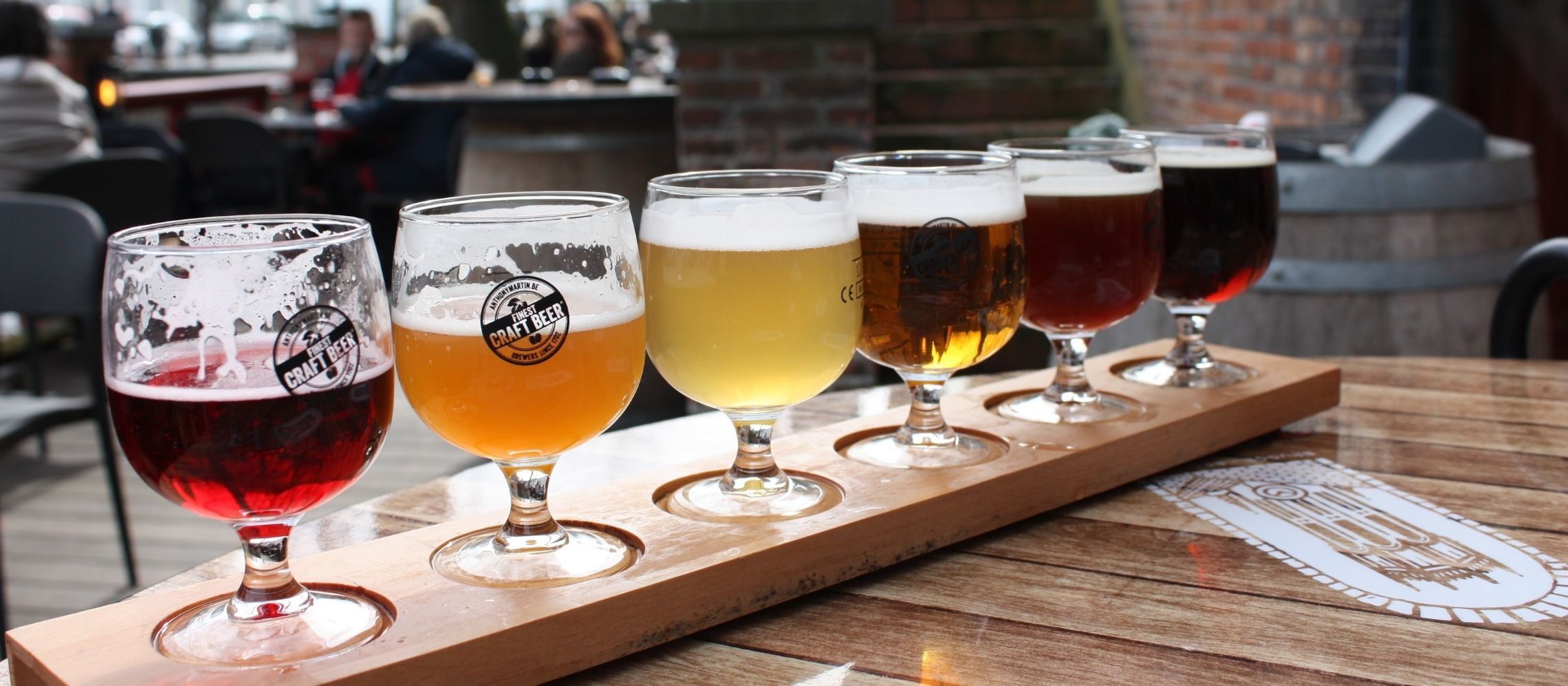Early Bird Deadline
30 November 2025
Judging
Date
23 March 2026
Winners Announcement
22 April 2026
30 November 2025
23 March 2026
22 April 2026

With November already upon us, and with any hopes dashed that the worst of Covid might be over, it’s the hospitality sector that continues to take the brunt of ever-changing lockdown measures. With hospitality often described as an economic engine, these businesses, to use a maritime analogy, have had to go from stop, to slow ahead, to half ahead, and back again to dead slow and standby (just one notch away from stop). This is where the real pain for beer brands lies, too.
Whilst the government has tried to throw a lifeline to the sector in terms of staff support and business loans, comments from senior beer marketers talking about a period “unlike any other” with “a high degree of volatility and uncertainty” and business “disproportionately affected” a clear picture emerges of what it’s like at the sharp end, reflected in a growing number of hospitality businesses already “finished with main engines” and closing permanently.
So what are the dynamics that can help the beer marketer make some more informed decisions in this volatile and uncertain market?
The UK on-trade accounts, pre-covid, accounted for the majority of beer sales, a situation that was clearly reflected in an immediate 40% year on year fall in pub beer sales in the first quarter, even though full national lockdown only occurred on March 23rd, just a week before the end of that quarter (source: British Beer & Pub Association / BBPA). A slightly later survey carried out by the Society of Independent Brewers (SIBA) after lockdown had started showed an even worse situation with small independent breweries beer sales down 82% in the immediate aftermath of the Covid outbreak and lockdown.
This early period saw the off-trade – the supermarkets and off-licences – take up some of the slack with sales up over 10%, but a figure which did not cover the overall 12.7% fall of total beer sales in March.
Nielsen figures covering the whole 17 week period of lockdown, however, do have beer as the major winner in the drinks category with off-trade value sales up £737 million year-on-year to £2.2 billion, with premium beers growing faster than standard beer, up £452 million and £164 million respectively, the result of consumers treating themselves, so trading up and trying different brands.
Other useful information for the beer marketer covers product categories. In a recent survey by Statistica (published September ‘20) this rated the top half dozen beer categories as: 1 – lager (71% of respondents), 2 – IPA (46%), 3 – Pale Ale & Bitter (39%), 4 – Stout (30%) and 5 – Wheat Beer (22%) with Porter, Mild and Brown Ale following on in short order.
Drilling down into these figures by looking at other research sources, whilst lager may lead in category terms and is forecast to continue to grow over time at a CGR of 1.8% (source: Allied Market Research), ale drinkers are far more experimental which, looking to the future, provides an opportunity to develop premium and crafted premium ales (source: 2019/20 Marston’s Report – this also adds support the growth in premium beer sales reported by Nielsen).
Nielsen also reports that whilst consumers stocked up on alcohol in March during lockdown, sales of ‘nolo’ (no- and low-alcohol) beverages also rose by 32.5%. Indeed, with brands such as Brewdog’s 0.5% ABV range, but also Budweiser and Heineken with their extensive ranges of low- and non-alcoholic beers, this is about tapping into a trend that’s all about innovation, newness and premiumisation, with products that maintain authenticity and quality, whilst offering exclusivity. Of course, it’s also very much about the growth in the number of young adults who say they don’t drink, up 6% in the last 12 months to 23% (source: SIBA British Craft Beer Report).
[[relatedPurchasesItems-40]]
Notwithstanding the moves made by the hospitality sector to meet Covid restrictions, making best use of space limited by law, and reassessing how it’s possible to continue to serve their clientele by developing delivery and take-away services (for those that are not solely wet-led), Covid strictures mean that the on-trade sector does not currently represent the best business opportunity for beer brands, either in volume nor value terms.
As such, whilst not replacing the volume potential of the on-trade, the off-trade has become the key sales channel with value potential.
Yet, whilst the Nielsen figures show premium beers winning out, straight economics, as well as political decisions – such as the end of the furlough scheme – also suggest it’s sensible not to ignore lower cost SKUs, multi-pack offers, price deals and specials and the development of promotional programmes working with the distribution chain and retailers, both bricks & mortar and virtual.
In terms of virtual marketing, Covid restrictions saw a boom in on-line, direct to consumer (D2C) retailing with Google reporting a 500% increase in people searching for local beer delivery during lockdown, with one such retailer reporting a 1,000% uplift in business allied to transaction values increasing by 300% (source: Google / The Independent). D2C promotions, supported by advertising – whether classic print, broadcast or digital, using social media platforms – were powerful tools before the arrival of coronavirus and, so the figures suggest, are even more powerful now, with Statistica showing a 40% uplift in social media use in 2020, and Facebook showing a 33% increase.
I suppose it’s not that surprising that some of these on-line sales figures have fallen back since the end of total lockdown and the introduction of the tiered system in England, with other systems in the devolved regions. Real concerns are now being expressed in terms of the continuing pressures on business, salaries, wages and employment and, with the country now officially in recession, this is a dynamic that requires marketers to look at price points, as I’ve touched on before, or, more powerfully, value for money perception.
It’s fair to say that 2020 has been more volatile for all business: so what have beer marketers in particular learned from the data as to what’s worked and what’s not?
Those that have been the most successful:
• Have refocused their points of purchase, changing from the on-trade to the off-trade sales channel, as well as focusing on on-line / e-commerce…
• Have refocused their target audience to account for behavioural changes in the way consumers purchase and react to marketing communications in different channels: the need, in digital terms, to account for the lack of an in-store experience – the lack of touch and feel of what’s being bought being the most important to address …
• Have refocused their marketing objectives: following the making of necessary changes to sales channels, especially as this applies to on-line, they have worked to develop more awareness, to engage more directly with consumers with the objective of (further) developing brand loyalty (there’s evidence to show that consumer drinking habits since lockdown has seen an increase in demand for more familiar, well-known brands)....
• Have refocused their media mix, using social media to reflect the rise in its use, whilst those with the budgets have been able to take advantage of an increase in TV viewing, up just shy of 50% (source: Statistica), with radio up, too, both year-on-year and throughout Q2, with listening sessions up 40% and listening hours up 59% (source: Global / RadioToday)…
• Have refocused both the content of their communications – to make it more experiential – as well as the tone of voice, so as to best reflect the channels used and the market situation: in a nutshell, consumers want experiences, not just transactions (so, for example, promotions like in-store tastings work well)…
• Continually have their eye on what continues to be rapidly changing market dynamics. Beer marketers have already earned their spurs – but the battle isn’t over yet.
About The Author
 The article is contributed by Alistair Morrell a Wine Inspector, wine industry consultant, journalist and, commentator. Over 30 years as a wine business professional, Alistair shares his global knowledge, network, and experience of growers, importers, distributors and buyers.
The article is contributed by Alistair Morrell a Wine Inspector, wine industry consultant, journalist and, commentator. Over 30 years as a wine business professional, Alistair shares his global knowledge, network, and experience of growers, importers, distributors and buyers.
Show your beers where it matters. Get your products tasted by top buyers and experts at the London Competitions — enter now.